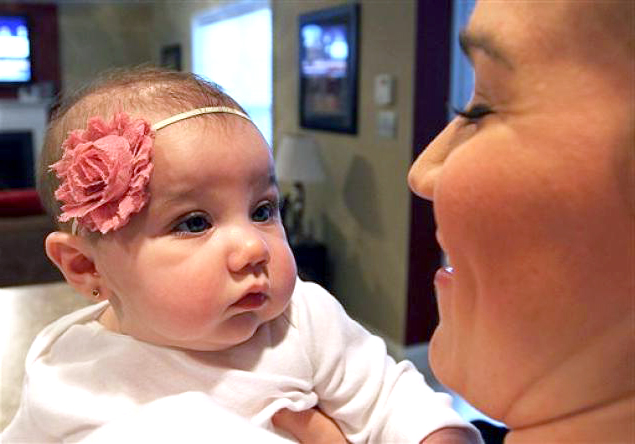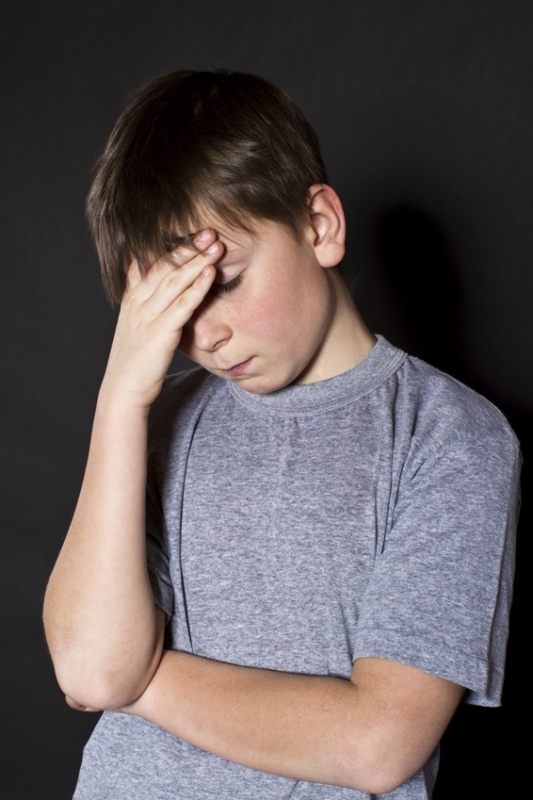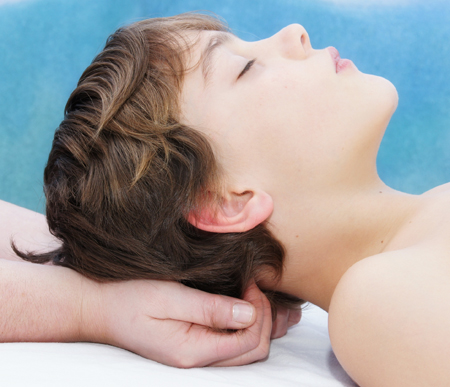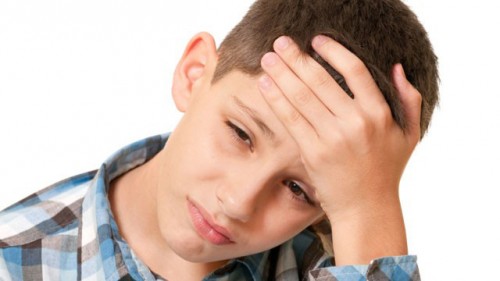Migraine Headache in Children
Pretty much everyone has had a headache at some time or other. Unfortunately it is principally viewed as an adult disease when, in fact, it frequently occurs in children and adolescents as well.
Headaches are a manifestation of a variety of illnesses, and most of the time don’t represent anything significant or chronic.
Four Different Types of Headache
However if a child’s headache recurs and becomes a problem, then, in order to diagnose and figure out a treatment, physicians classify them into four different types of causes:
- Headache due to cranial inflammation – like meningitis and arteritis (inflamed artery);
- Headache due to diseases of related structures – like eyes, sinuses, nose, and skull;
- traction headache – from pressure like tumors, abscess, hypertension; and
- vascular and muscular headaches – like tension and migraine.
Most Common Causes in Children
 If your son or daughter often complained of headaches when they were otherwise well you might first think of eye strain and tension or stress – and you’d often be right.
If your son or daughter often complained of headaches when they were otherwise well you might first think of eye strain and tension or stress – and you’d often be right.
An infant with “fussiness” and a “glazed look” could well be due to the constriction done by the elastic band of a head adornment [also pierced earrings in an infant – not a good thing].
Headache is fairly often the first indication of a vision problem, especially in a younger child. And, as a child’s life becomes more “complicated” with age, tension headaches appear and must be dealth with.
Eyeglasses and parenting make those kinds of headaches fairly short lived. If the problem becomes sort of a permanent feature of a child’s experience, the diagnosis (and treatment) becomes a bit more complicated.
Vascular Headaches: Migraine
Let’s talk, in this article, about migraine headache in children. Approximately 2.5% of our school age children experience migraine headaches between the ages of seven and nine. The incidence increases to 5% in the 13 to 15 year old age group.
There are even several different types of migraine which doctors classify still further into: Classic and Non-classic.
Classic Migraine
 Probably the most common type of migraine is what is known as “Classic Migraine” which usually has its onset between 7 and 15 years of age, manifests itself by a prodrome (funny feeling) then progresses to a “come-in-from-play” headache phase.
Probably the most common type of migraine is what is known as “Classic Migraine” which usually has its onset between 7 and 15 years of age, manifests itself by a prodrome (funny feeling) then progresses to a “come-in-from-play” headache phase.
The prodrome is characterized by any of several different symptoms (e.g. visual, gastric and/or neurological disturbances) which then blend into, or are replaced by, the headache.
Typical prodrome symptoms can be: loss of appetite, irritability, nausea and vomiting, restlessness, fluid retention, visual or hearing disturbances, sensory disturbances (tingling pins and needles), un-coordination or weakness of extremities and possibly inability to speak.
Pain is usually one-sided in onset, but can become generalized. It most frequently is described as "throbbing" or pulsating, building slowly and intensity to a peak minutes, hours, or even days later.
When the headache reaches its climax, vomiting commonly develops and then the child experiences relief of the pain and finally the ability to sleep.
Non-Classic Migraine
There are other types of migraine besides classic, namely: Common, Cluster, and Complicated. which are variations of the classic type that I just described and felt to have different causes – albeit, still largely unknown.
Why they happen is still a mystery but is felt that for some reason the blood vessels in the head are triggered to go into spasm or vessel constriction. This is followed by a distinct phase of vessel dilation accompanied by headache.
Diagnosis
Diagnosis in children who cannot speak is very difficult but as the child becomes older it is important to rule out any of the other causes before you assume that it is a migraine.
Your physician should do a physical examination, take a careful history, and may even run some laboratory tests or x-rays – which all take more than the normally-allotted, 10 to 15 minute “sick child” visit. As in so many other childhood illnesses, if your child hasn’t received an undressed, head-to-toe physical you are probably being short-changed and important things can be missed.
If there is any indication that there might be a brain tumor, a head CT scan will also probably be performed.
Treatment
 Treatment in children is usually not difficult and consists of rest in a quiet, darkened room with mild analgesics (aspirin); removal of any constrictive or tight clothing; and distancing from any known ‘triggers’ such as smells, animals, allergens and foods. Some children respond to light massage but others just “don’t want to be touched”… or even talked to.
Treatment in children is usually not difficult and consists of rest in a quiet, darkened room with mild analgesics (aspirin); removal of any constrictive or tight clothing; and distancing from any known ‘triggers’ such as smells, animals, allergens and foods. Some children respond to light massage but others just “don’t want to be touched”… or even talked to.
From a long-term parenting standpoint, it is especially important NOT to “reward” any illness with special attention and/or treats – especially those without observable outward signs and which you know might recur. This is important in childhood migraine as well – although if your son tries to get out of mowing the lawn by completely going to bed for half a day, we may be dealing with different issues.
There are some medications (ergotamine) which work by preventing the final dilation and pain phase and therefore must be taken at the very first onset of the prodrome or they will not work – like in the large number of children who either don’t have, or can’t notice and verbalize, a prodrome phase.
Other medications (like periactin) are used to try and prevent attacks altogether in those children whose headaches are fairly frequent and therefore can be predicted.
Prevention
The reduction of such precipitating factors as: fatigue, foods containing Tyramine (like cheese), flickering or bright lights, lack of nutritious meals, school or peer pressures, or alcohol is essential.
The outcome of migraine children is generally favorable. There seems to be little correlation between the type of migraine, its severity or frequency, and the ultimate outcome.
Studies show that approximately 2/3 of all children with migraines will be improved or symptom free in long term follow-up

